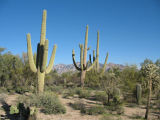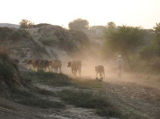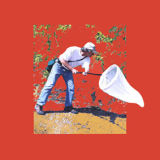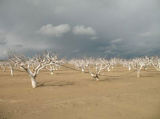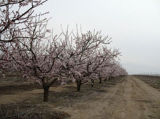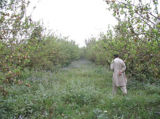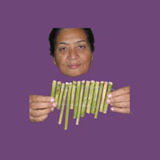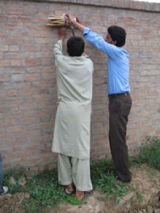lectures
Lecture - PARTY ON!
This illustrated talk describes our art/science research on three continents, and our increasing appreciation and admiration for wild bees, wild places and wild entomologists that have inspired the work for our exhibition, PARTY ON! which champions the solitary bee as an important pollinator, and which exposes a tiny fraction of this threatened dance of life.
Our presentation discusses how our artwork has evolved from scientific collaboration and research, the social and economic importance of preserving biodiversity and its effect upon human wellbeing.
In the talk we reference the contrasts between our pollination project fieldwork on a farm on the outskirts of Lahore with the World Wildlife Fund for nature, Pakistan, and the Almond Pollination Project in the Central Valley in California.
Lecture - Art meets Science
‘As a generalisation artists and scientists are quite often seen as eccentric and yet as if in conflict. The artist is seen as intuitive, reflective and spiritual; the scientist as the purveyor of cold hard facts which neatly fit into the Darwinist Theory of Evolution’.
Our illustrated talk questions this generalisation and explores the interactions between artists and scientists that enable a greater understanding of the world around us.
Through our collaborative research projects with natural scientists we have discovered that the boundaries between art and science are fluid and interactive. Our artwork provides the opportunity to put into the public domain an alternative vision of scientific and environmental research.
This illustrated talk describes our art/science research on three continents, and our increasing appreciation and admiration for wild bees, wild places and wild entomologists that have inspired the work for our exhibition, PARTY ON! which champions the solitary bee as an important pollinator, and which exposes a tiny fraction of this threatened dance of life.
Our presentation discusses how our artwork has evolved from scientific collaboration and research, the social and economic importance of preserving biodiversity and its effect upon human wellbeing.
In the talk we reference the contrasts between our pollination project fieldwork on a farm on the outskirts of Lahore with the World Wildlife Fund for nature, Pakistan, and the Almond Pollination Project in the Central Valley in California.
Lecture - Art meets Science
‘As a generalisation artists and scientists are quite often seen as eccentric and yet as if in conflict. The artist is seen as intuitive, reflective and spiritual; the scientist as the purveyor of cold hard facts which neatly fit into the Darwinist Theory of Evolution’.
Our illustrated talk questions this generalisation and explores the interactions between artists and scientists that enable a greater understanding of the world around us.
Through our collaborative research projects with natural scientists we have discovered that the boundaries between art and science are fluid and interactive. Our artwork provides the opportunity to put into the public domain an alternative vision of scientific and environmental research.

